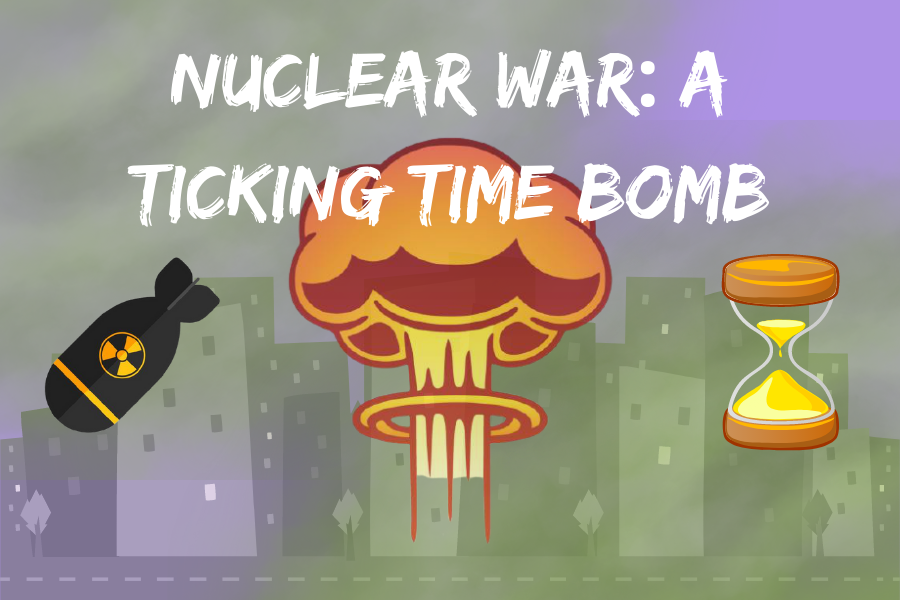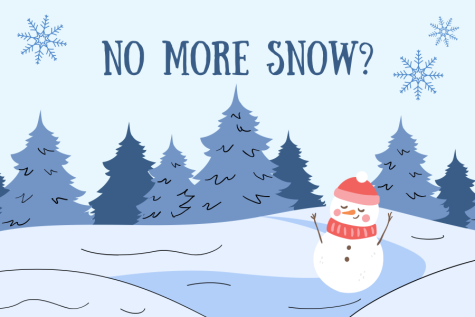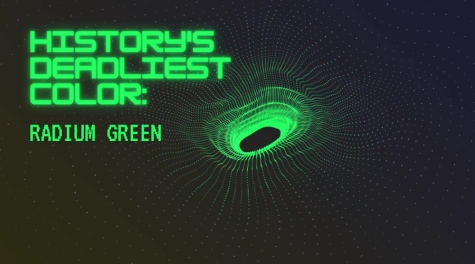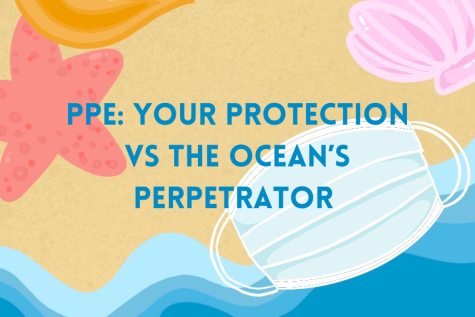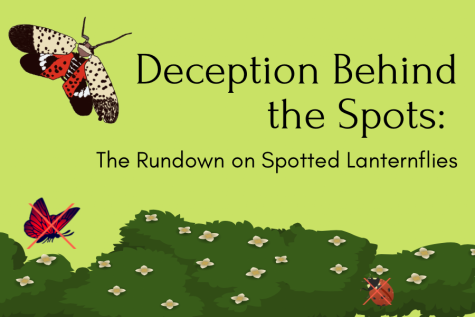Nuclear War: A Ticking Time Bomb
Fears of nuclear war
The Doomsday Clock is currently set at 100 seconds to midnight. The Doomsday Clock, set by the Bulletin of the Atomic Scientists, is a representation of how close humanity is to being obliterated or wiped out, mostly concerning the factors of nuclear war and climate change. The closer the time is set to midnight, the closer and more likely an existential threat is. This 100 second mark is closer to midnight than at any point in the Cold War, when the world was feared to be on the brink of nuclear disaster. The clock being set closer to midnight than it has ever been in its existence reveals the extreme gravity and seriousness of the possibility of disastrous, human-race-ending nuclear war and destruction.
Although many countries are exhibiting efforts to reduce their stockpiles of nuclear weapons, there still remain around 14,000 total in the world today (down from 70,000 in 1986), 95% of which are from the U.S. or Russia. These lower numbers, however, do not necessarily mean a safer world, as countries like the U.K. and U.S. are still upgrading and modernizing their existing stockpile of weapons despite decreasing the number of weapons they have. The U.S., in particular, is expected to spend over a trillion dollars by the 2040s in its efforts to upgrade its nuclear weapons technology. With nuclear war hanging on the thin thread that is deterrence, highlighting and studying the effects and aftermath of such a devastating war is crucial.
Effects of one modern nuclear blast
There currently exist several types and sizes of nuclear warheads, but we will consider an 800-kiloton warhead, which is over a hundred times more powerful than the atomic bomb dropped on Hiroshima in 1945.
An initial and immediate fireball 800 meters in radius would vaporize and instantly kill everyone inside. All buildings and infrastructure within a 2-kilometer-radius circle would be utterly destroyed, killing about 98% of the people in the circle. In a city of four million people, this blast would thus immediately kill over a hundred thousand people.
From 2 kilometers to 11 kilometers, radiant heat would cause third-degree burns, and clothing and skin could erupt in flames. Debris would cause complete demolition, killing many people that were not affected by radiant heat. In this area, about 50% of the population would be killed, amounting to about half a million people in a four-million-person city.
The distance that dangerous radioactivity could travel and the extent of the death it creates greatly depends on wind and the site of explosion. An air burst attack would not create nearly as much radioactive fallout as ground attacks. While an air burst attack would kill approximately 100,000 people, a ground blast could kill almost a million people.
Effects of a relatively small modern nuclear war
A studying analyzing the effects of a 100-bomb war, all the size of the Hiroshima bomb, between India and Pakistan would release 5 megatons of black carbon, soot, in the atmosphere, which would cause global temperatures to fall and decrease global annual rain by 9%, possibly triggering crop failures and famine. This global destruction resulting from bombs dropped in just on area on the planet could cause 2 billion people to starve.
According to another study of a hypothetical nuclear war, not limited to Hiroshima-sized bombs, between India and Pakistan, could kill over a hundred million people within days. This war would also create a climate catastrophe, releasing approximately 36 megatons of black carbon, resulting in a 9 degree decrease in global temperatures and a reduction in precipitation by 30%. Temperatures could reach as low as the last Ice Age. And, the nuclear arsenals of India and Pakistan, only in the hundreds, are not nearly as large or technologically advanced as those of the U.S. and Russia, meaning a nuclear war that could tug in larger powers could be exponentially more destructful.
An analysis of a nuclear war between the U.S. and Russia estimated that the result would be a multi-year nuclear winter with temperatures decreased by about 16 degrees Fahrenheit globally. Black carbon would cover the Earth, not dissipating for a whole decade. Three years would also be required in order for surface light to return to even 40 percent of its level before the war.
Effects of the explosion of every nuclear weapon in the world
The detonation of almost every nuclear weapon in the world, all evenly spaced out, would immediately obliterate roughly 23 cubic miles of land, but soon after, 90,000 square miles of infrastructure will be destroyed, everything within 31,000 square miles would vaporize, people in an area of 2.2 million square miles would get third-degree burns, and ionizing radiation would contaminate about 110,000 square miles of the Earth’s surface. Hundreds of millions or even billions of people could be brutally killed within just an hour. In an extreme nuclear winter, nearly 100% of the Earth’s surface will be under perpetual darkness, blocked off from solar radiation for several decades or even centuries. Those not killed from the initial blasts would soon die painful deaths, resulting in a very likely extinction of the human race.
So, yeah, nuclear war does not seem like a future we’d want to flirt with.
Works Cited
Andrews, Robin. “What Would Happen If Every Single Nuke In The World Went Off At The Same Time?” IFLScience, IFLScience, 8 July 2019, www.iflscience.com/physics/what-would-happen-if-every-single-nuke-in-the-world-went-off-at-the-same-time/page-3/.
Halloran, Neil, director. Simulation of a Nuclear Blast in a Major City. YouTube, Nobel Peace Prize – Research and Information, 1 Oct. 2020, www.youtube.com/watch?v=Z3RzNEzJyzo.
Matthews, Robert. “What Would Happen If All the Nuclear Bombs Were Detonated?” BBC Science Focus Magazine, www.sciencefocus.com/future-technology/what-would-happen-if-all-the-nuclear-bombs-were-detonated/.
Mecklin, John. “Current Time – 2021.” Bulletin of the Atomic Scientists, 4 June 2021, thebulletin.org/doomsday-clock/current-time/.
“Nuclear Weapons: Which Countries Have Them and How Many Are There?” BBC News, BBC, 14 Jan. 2020, www.bbc.com/news/newsbeat-51091897.
Rice, Doyle. “Nuclear War between India and Pakistan Could Kill up to 125 Million and Launch a Global Climate Catastrophe.” USA Today, Gannett Satellite Information Network, 2 Oct. 2019, www.usatoday.com/story/news/nation/2019/10/02/nuclear-war-between-india-and-pakistan-could-kill-up-125-million/3840582002/.
“Timeline.” Bulletin of the Atomic Scientists, 5 May 2021, thebulletin.org/doomsday-clock/timeline/.
“What If We Have A Nuclear War?” AsapScience, YouTube, 26 Jan. 2017, www.youtube.com/watch?v=JL4Kqfxg2KU.

